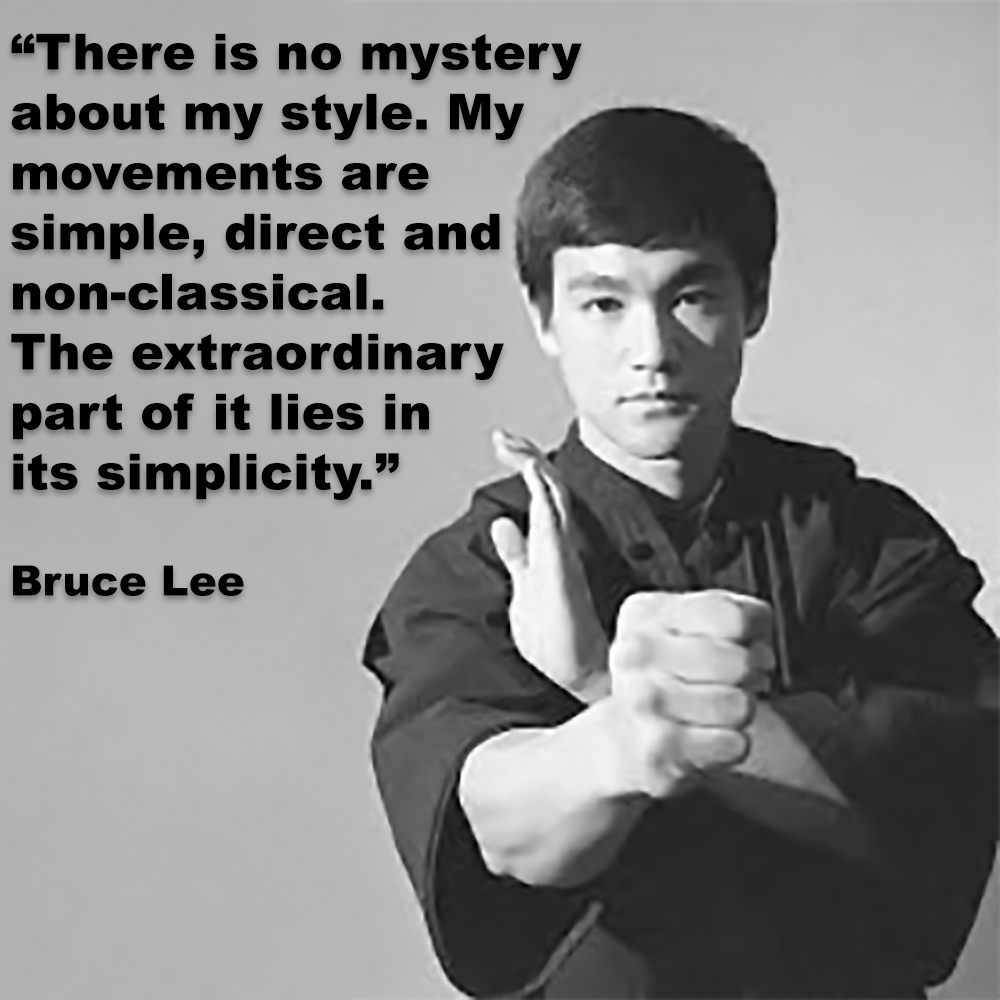
Personally I believe that analyzing kata and its applications from a logical or common sense perspective makes a compelling case for the best way to approach and dissect principles and techniques.
.
There is of course value in aesthetic, sporting and cultural aspects of karate and its kata – but for me, my main interest is developing functional combative skills, to fully understand the karate from that perspective. Therefore the right approach for me is the most functional….. the “civilian self-protection” approach.
.
Recently someone commented on one of my articles that said that I was; “some random dude trying to make a name for himself.” – That made me smile, but I wondered, perhaps I didn’t reach him on an intellectual level. 🤭 Let’s try again…..
.
Karate embodies a philosophy that extends beyond physical combat. It emphasizes self-discipline, focus, and efficiency in movement. In exploring the principles of karate, you can discover a connection to the concept of ‘Occam’s Razor’ – a philosophical tool that promotes simplicity.
.
Occam’s Razor, attributed to the 14th-century philosopher William of Ockham, makes the premise that among competing hypotheses or explanations, the simplest one is often the most accurate. It advocates for eliminating unnecessary assumptions, complexities, and prioritizing concise explanations.
.
Occam’s Razor could be applied to the practice of karate, shedding light on the fundamental aspects that can make it effective in a combative scenario.
.
When studying the movements of karate, significant emphasis should be placed on economy of motion, aiming to achieve maximum effectiveness with minimal effort. Occam’s Razor can be applied by eliminating excessive movements that do not contribute to a technique’s efficiency.
.
Each technique is executed with precise and straightforward actions, avoiding unnecessary embellishments that may hinder speed or accuracy. And by simplifying movements to their essential elements, practitioners can maximize their effectiveness and conserve energy.
.
Occam’s razor is often incorrectly summarized as “the simplest explanation is most likely the correct one”.
.
However, that’s a little misleading as the principle is actually about establishing a burden of proof.
.
The word “razor” is used because the principle is about “cutting away” unnecessary assumptions.
.
Karate techniques should be direct and uncomplicated. As an example, using Occam’s Razor when analyzing kata can guide practitioners to focus on the core principles of each technique, eliminating unnecessary complexities, and studying the movement as a whole. By embracing simplicity, practitioners can enhance their understanding and execution of techniques, allowing for more efficient movement. This emphasis on simplicity is evident in the fundamental techniques which rely on straightforward mechanics and minimalistic principles.
.
Therefore you could use the principle of Occam’s Razor as a guiding principle in your karate, allowing you to uncover the deeper meaning (rather than just block, punch) and understanding its fundamental principles. Through this lens, karate practitioners can strive for efficiency, precision, and effectiveness in both physical movements and overall approach.
.
My father used to say, “Don’t raise your voice, improve your argument.”
.
(About to change the name of my Dojo to: “That Random Dude off the Internet.” LOL)
.
